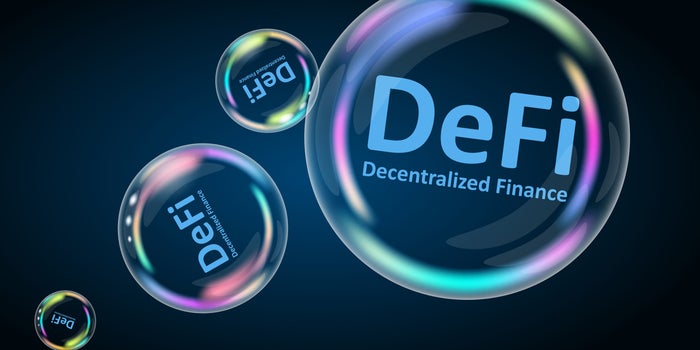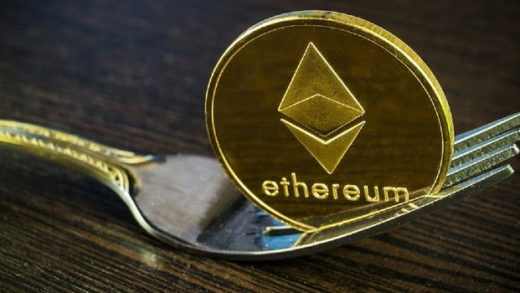
The speed of technological development and innovation in the crypto space has always been impressive, but DeFi takes it to a new level. In 2019, even many people who were familiar with Bitcoin and Ethereum still hadn’t heard of DeFi. By the summer of 2020, it was the hottest ticket in the sector. Even then, DeFi was almost the sole preserve of Ethereum, with a few minor applications running on other platforms. DeFi’s flagship apps, including Maker, Uniswap, Aave, and Compound, made headlines as the total value locked increased to around $20 billion by the end of 2020.
As DeFi on Ethereum has proliferated, the platform’s aging infrastructure and legacy Proof-of-Work algorithm means that transaction fees have soared. At one point in May, the average fee spiked above $70. These costs make DeFi on Ethereum prohibitively expensive for all but the largest transactions.
Therefore, it was inevitable that application developers would start to find roots on other platforms. Only halfway through 2021, and DeFi has become an ecosystem that sprawls over the entire landscape of blockchain platforms. The arrival of several next-generation projects, including Binance Smart Chain and Polkadot, has helped, and each is now nurturing its own blossoming network of DeFi apps.
But currently, it’s fair to say that layer 2 platforms are the most significant growth area in DeFi, perhaps in the broader blockchain space. Layer 2 platforms use various technologies such as Plasma and rollups to process transactions off the Ethereum main chain. They periodically update data about the state of smart contracts and accounts, handling far greater throughput than Ethereum. Layer 2 platforms alleviate traffic on the Ethereum network, with the added bonus of significantly lower fees.
Polygon Rides the Wave
So far, Polygon (previously Matic) is proving to be a standout success flying the flag for layer 2 platforms. After taking its mainnet live last year, the project has gained significant traction among new and established projects and users. In May, decentralized application aggregator DApp Radar reported that Polygon had attracted over 75,000 new users in seven days.
However, Polygon is also drawing in established applications looking to expand beyond Ethereum and provide an alternative for users seeking lower fees and faster transaction times.
Aave launched its Polygon iteration in late April, and by the first week of June, there was close to $8 billion locked. DEX liquidity aggregator 0x also recently released a Polygon-compatible API. Curve, Paraswap, 1inch, SushiSwap, and others have also migrated to the platform.
Old and new apps also appear to be jumping on the opportunity to collaborate further bolstering the Polygon ecosystem. For instance, when Aave announced it was migrating to Polygon, native DEX QuickSwap allocated 3% of its total QUICK token supply, around $5 million worth, to incentivizing users on the Aave Polygon version.
Integrations and Partnerships
Polygon is also gaining integration and support from other DeFi protocols. In late May, the interoperable DeFi platform RenVM announced that it had launched a bridge to Polygon, allowing DeFi users to move Ren-based assets, including Ren versions of BTC, BCH, and DOGE, directly onto Polygon without interacting with Ethereum. Once there, they can interact and generate yield on Polygon protocols, for example, by providing liquidity on QuickSwap, or by earning interest from Curve’s stablecoin lending pools.
In another example of the increasingly blurred boundaries between CeFi and DeFi, OKEx recently integrated the U.S. branch of its exchange to Polygon. The move allows OKEx customers direct access to the entire Ethereum and Polygon-based DeFi ecosystem – without needing an Ethereum wallet.
Despite the impressive progress, it seems that the team at Polygon isn’t resting on its laurels. In early June, the project announced a joint venture fund in partnership with AU21 Capital. The Polygon Ecosystem Fund, worth $21 million, will be funneled directly into promising projects building on the Polygon network.
A Network of Networks
While Polygon is making headlines, it’s far from the only player in the layer 2 game. Offchain Labs recently launched Arbitrum One, the beta version of its layer 2 platform, which uses gasless side chains based on rollups. According to the mainnet launch announcement, over 250 teams have already expressed an interest in developing on Arbitrum One.
Celer Network is another layer 2 platform making inroads into the DeFi space. In April, the project announced it was ready to launch a new DeFi-focused platform based on rollups. Celer’s Layer2 Finance platform aims for cross-chain DeFi interoperability, bypassing Ethereum’s high transaction fees to access all of the DeFi ecosystem.
Lower costs and a better user experience will help to democratize access to DeFi beyond the initial group of early adopters. With Ethereum’s scalability struggles set to continue for at least the rest of this year, there’s plenty of room for layer 2 platforms to continue to demonstrate their capabilities.
About the author: Sameep Singhania is the Co-Founder at QuickSwap, a UniSwap DEX clone utilizing the most adopted Ethereum Layer 2 scaling solution: Matic Network. QuickSwap is known for its lightning-fast speeds with near-zero gas fees. You can follow QuickSwap on Twitter
The views and opinions expressed herein are the views and opinions of the author and do not necessarily reflect those of Smash Blockchain












